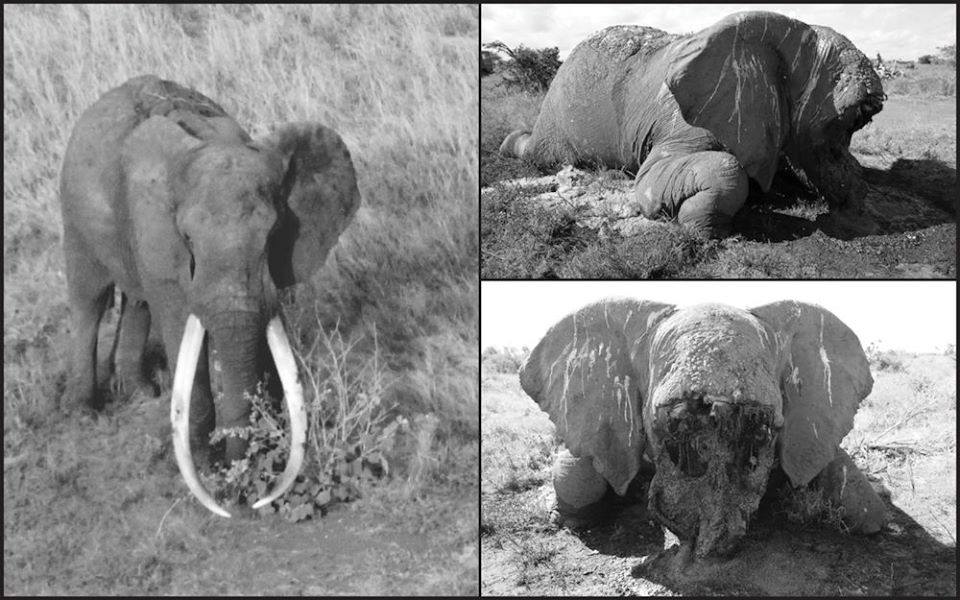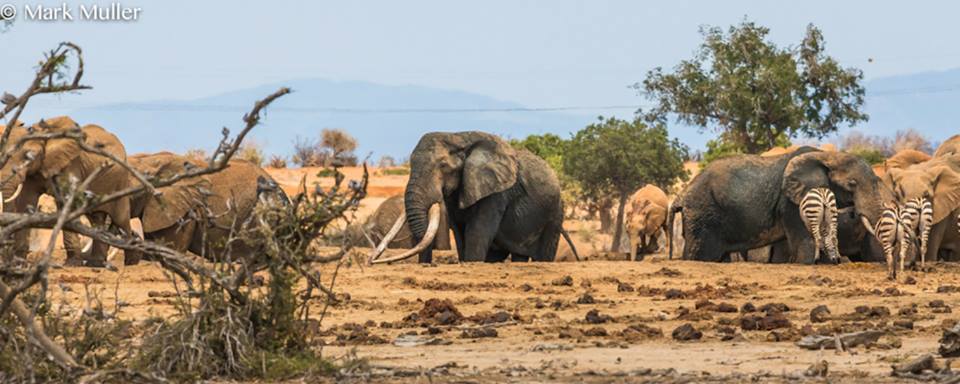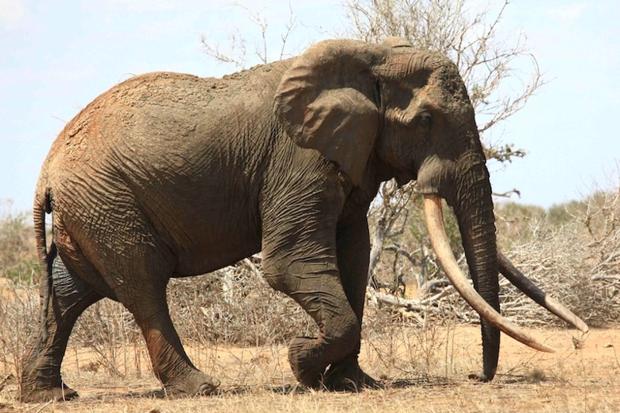NitroX
|
| (.700 member) |
| 15/06/14 12:10 AM |

|
|
|

Another example of the complete failure of the anti-hunting policies of Kenya. Satao, a named elephant and big tusker located in the Tsavo area, shot by poachers with poisoned arrows and the ivory stolen for illegal sale.

From the Tsavo Trust site:
THE TSAVO TRUST
KWAHERI SATAO - SAYING GOODBYE TO A TSAVO ICON
With great sadness, we report the death of Satao, one of
Tsavo’s most iconic and well-loved tuskers. This
magnificent elephant was widely known in Tsavo East
National Park, where he was observed with awe by many
thousands of Tsavo’s visitors over the years. No longer
will Tsavo and Kenya benefit from his mighty presence.
Satao was shot dead by poisoned arrow on 30th May 2014.
The arrow had entered his left flank and he stood no
chance of survival. We spotted his carcass on 2nd June
but to avoid any potential false alarms, we first took
pains to verify the carcass really was his. Today it is
with enormous regret that we confirm there is no doubt
that Satao is dead, killed by an ivory poacher’s
poisoned arrow to feed the seemingly insatiable demand
for ivory in far off countries. A great life lost so
that someone far away can have a trinket on their
mantelpiece.

THIS REPORT HAS BEEN CLEARED FOR PUBLIC CIRCULATION BY
KWS.
INCIDENT REPORT
For the last 18 months, KWS and TSAVO TRUST jointly
monitored Satao’s movements using aerial reconnaissance,
and KWS deployed ground personnel in his known home
range. But with today’s mounting poaching pressures and
anti-poaching resources stretched to the limit, it
proved impossible to prevent the poachers getting
through the net.
Immediately reports of a fresh carcass in this area of
Tsavo were received by KWS, a TSAVO TRUST reconnaissance
flight took off with a KWS officer on board. It did not
take long to locate the carcass near the boundary of the
National Park. A joint KWS / TSAVO TRUST ground team
followed up immediately. Despite the mutilated head,
they deduced that the carcass was most probably that of
Satao for the following reasons:
• Satao was well known by the KWS / TSAVO TRUST units
operating continuously in this area. When he was alive,
his enormous tusks were easily identifiable, even from
the air. Although the poachers had hacked off his face
and taken his ivory, there were other physical
attributes and circumstantial evidence that pointed to
this carcass being that of Satao.
• Satao was very much a creature of habit. He roamed a
very specific area, known to KWS and TSAVO TRUST, most
often in the company of small groups of bull elephant.
• With the recent rain, over 1,000 elephants have moved
into the area to take advantage of the green and
plentiful vegetation. Satao had not moved from this area
for the last two months.
• Satao was last seen alive by TSAVO TRUST on 19th May
2014, just 300 meters from where his carcass now lies.
He was with four other bulls that he was frequently seen
with. During May 2014, TSAVO TRUST had observed him no
fewer than 9 times from the air and several times from
the ground. Protection efforts were stepped up when he
ventured right up to the boundary of the Park (an area
that is a historical and present poaching hotspot,
especially for poachers using poisoned arrows).
• Satao had “clean ears” – there were no cuts, tears or
obvious scars, making him easily identifiable when he
was alive and now that he is dead.
• The mud caked on his mutilated forehead and back was
similar to that seen on him when he was alive.
• Since locating the carcass, several joint KWS / TSAVO
TRUST reconnaissance flights have tried and failed to
locate Satao in his known home range.
The facts all point to the same appalling conclusion and
we are left with no choice but to acknowledge that the
great Satao is no more.
THE ENORMITY OF THE TASK AT HAND
The area Satao frequented is a massive and hostile
expanse for any single anti-poaching unit to cover, at
least one thousand square kilometers in size. Roads and
tracks are few and far between and in parts the
vegetation is very thick, making access difficult.
Elephants concentrate here in large numbers after the
rains which come in from the coast. The communities
living just beyond the National Park boundary
persistently carry out illegal activities inside the
Park in this area. Understaffed and with inadequate
resources given the scale of the challenge, KWS ground
units have a massive uphill struggle to protect wildlife
in this area. There is a tremendous will amongst the KWS
field units and the TSAVO TRUST personnel working
alongside them to protect Tsavo’s elephant herds but
more help is needed.
COOPERATION IN THE FACE OF ADVERSITY
At times like this, it is hard to see any positive side
to the situation. But let’s not forget that Satao’s
genes survive out there, somewhere in the Tsavo elephant
population and they too need protecting. Satao would
have been at least 45 years old. During his lifetime he
would have weathered many droughts and seen many other
poached elephants, and he would have sired offspring
that, given a safe environment to grow up in, may become
tomorrow’s generation of great Tsavo tuskers.
We also wish to emphasize the level of cooperation and
coordination between KWS and TSAVO TRUST that this
incident proved. Without the regular joint KWS / TSAVO
TRUST aerial reconnaissance of this section of the Park,
Satao’s carcass may not have been found, and as a result
KWS’s swift and successful follow-up may not have
ensued. Following TSAVO TRUST’s report from the air, KWS
ground units were immediately deployed. The KWS reaction
was rapid and decisive, and is still ongoing. Due to the
sensitivities of such operations and the risk of
compromise, we cannot comment further on the progress
being made. We hope to relay additional updates in due
course.
Meanwhile, we applaud KWS’s success in arresting the
main poison dealer and supplier in Kilifi, whose deadly
product has been the cause of many painful and wasteful
elephant deaths in Tsavo.
Working together – and often against the odds - we can
continue to make a positive difference to Tsavo and to
Tsavo’s elephants.
Tsavo is our home, our passion and our life’s work but,
as the untimely death of Satao so tragically proves, we
cannot win every time. Rest in peace, Old Friend, you
will be missed. Rest assured the fight to protect
Tsavo’s elephants goes on.
